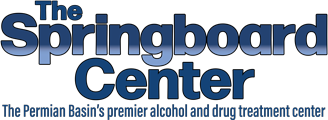Your doctor hands you a prescription for gabapentin to manage chronic pain. It seems harmless enough — just another medication to help you feel better. But what you don’t know could change everything.
Gabapentinoids abuse is silently affecting thousands of people who started with legitimate prescriptions. These medication s, including gabapentin and pregabalin, can transform from helpful treatments into dangerous dependencies without warning. The transition happens so gradually that many people don’t recognize the signs until they’re already struggling with addiction.
Understanding how this process unfolds can protect you and your loved ones from unexpected dependence. Knowledge becomes your most powerful tool for maintaining control over your health and recovery journey.
Related: Does Alcohol Withdrawal Cause High Blood Pressure: What You Need to Know
What Are Gabapentinoids and Why They’re Widely Prescribed
Gabapentinoids represent a unique class of medications that work directly on your nervous system. They modify how your brain processes pain signals and electrical activity, offering relief when traditional treatments fall short.
Gabapentin for Nerve Pain and Seizure Control
Gabapentin was originally developed to help people with epilepsy control their seizures. It works by calming overactive nerve signals in the brain. This same calming action makes it highly effective for treating nerve pain conditions.
People with diabetes frequently develop painful nerve damage in their hands and feet. Gabapentin misuse often begins when patients seek relief from this burning, tingling sensation that disrupts sleep and daily activities. The medication targets the nerves themselves rather than just masking pain symptoms.
Healthcare providers appreciate gabapentin because it offers a different approach to pain management. When other treatments haven’t provided adequate relief, this medication can offer new hope for patients struggling with chronic conditions.
Pregabalin for Fibromyalgia and Anxiety Disorders
Pregabalin represents an advancement in gabapentinoid therapy, offering more targeted relief for specific conditions. The FDA has specifically approved it for treating fibromyalgia, a complex condition causing widespread muscle pain and fatigue.
People with fibromyalgia often experience multiple symptoms simultaneously, including sleep disturbances and mood challenges. Pregabalin abuse can develop when patients appreciate how the medication addresses several problems at once, improving sleep quality while reducing constant physical discomfort.
This medication also treats certain anxiety disorders when other approaches haven’t been successful. The dual benefit of addressing both physical and emotional symptoms makes it valuable for people with complex medical needs.
Off-Label Uses That Increase Prescription Rates

Healthcare providers frequently prescribe gabapentinoids for conditions beyond their original FDA approval. This off-label prescribing allows doctors to help patients with diverse medical challenges.
Many physicians use gabapentin to support patients during alcohol withdrawal, helping reduce seizure risk and ease uncomfortable symptoms. Some prescribe it for managing hot flashes during menopause or addressing sleep disorders.
The wide range of applications means more people have access to these medications. While this expanded use helps many patients find relief, it also creates more opportunities for risks of gabapentinoids to emerge through unintended misuse.
How Gabapentinoids Abuse Develops from Legitimate Use
Most people who develop gabapentinoids abuse begin with proper medical supervision and legitimate prescriptions. The journey from therapeutic use to dependence often unfolds gradually, making it difficult to recognize until significant problems develop.
Taking Higher Doses Than Prescribed for Better Pain Relief
Living with chronic pain creates tremendous frustration and exhaustion. When standard doses provide only partial relief, some patients make the understandable decision to increase their medication.
The logic seems reasonable: if one pill provides some help, taking two should offer greater relief. Unfortunately, tolerance develops with gabapentinoids, meaning the same dose becomes less effective over time.
As tolerance builds, patients find themselves needing progressively higher amounts to achieve the same benefits they once experienced. This escalation pattern represents one of the most common gabapentin addiction signs that family members should understand and watch for carefully.
Using Medications More Frequently Than Directed
Some patients begin taking their gabapentinoids more often than their prescription indicates. Instead of following the prescribed schedule, they might take doses whenever discomfort returns.
This frequent dosing pattern often develops when patients feel their symptoms returning between scheduled doses. Rather than discussing these concerns with their healthcare provider, they adjust their medication routine independently.
Communication with healthcare providers becomes crucial at this stage. Patients who feel comfortable discussing their symptom patterns can work with their doctors to find appropriate solutions that maintain both safety and effectiveness.
Combining with Other Substances to Enhance Effects

Some individuals discover that gabapentinoids produce different effects when combined with alcohol or other medications. The enhanced relaxation that results can become appealing beyond just pain relief.
Combining gabapentinoids with opioid pain medications creates particularly serious concerns. Both medication types can affect breathing and cause sedation, making the combination potentially dangerous.
People recovering from other substance use disorders may view prescription gabapentinoids as safer alternatives. However, this thinking can lead to new dependency patterns that require professional attention and support.
Warning Signs That Indicate Gabapentin Addiction
Recognizing gabapentin addiction signs early creates opportunities for intervention before serious consequences develop. These indicators often appear gradually and may initially seem like normal medication side effects.
Physical Symptoms Like Dizziness and Memory Problems
People misusing gabapentinoids frequently experience increasing physical symptoms that interfere with daily functioning. Dizziness becomes more pronounced and frequent, particularly when changing positions quickly.
Memory and concentration difficulties often develop, making it challenging to complete routine tasks or maintain conversations. People may appear confused or mentally unclear throughout the day.
Sleep patterns typically change significantly, with some individuals becoming extremely drowsy during daytime hours while struggling with nighttime rest. Others may sleep for extended periods but still feel unrested and fatigued.
Balance problems can increase fall risks and create safety concerns during normal activities. These physical changes signal that medication use may have moved beyond therapeutic levels.
Behavioral Changes Including Doctor Shopping
Seeking prescriptions from multiple healthcare providers represents a significant warning sign for prescription drug abuse. This behavior, known as doctor shopping, involves visiting different doctors to obtain additional medications.
Some people begin requesting gabapentinoids from friends or family members who have unused prescriptions. They might ask to borrow medication when their own supply runs out before the refill date.
Changes in honesty about symptoms or pain levels become common as people work to justify higher doses or more frequent refills. They may research symptoms to make their requests seem more medically appropriate.
Social relationships often suffer as focus shifts toward obtaining and managing medication rather than maintaining normal connections and activities with loved ones.
Emotional Dependencies on the Medication for Daily Function
People developing gabapentinoid dependence often feel unable to manage daily life without their medication. Anxiety increases when pill supplies run low or when facing delays in prescription refills.
The medication becomes central to daily planning and routine management. Missing doses can cause extreme distress, even when physical withdrawal symptoms haven’t yet developed.
Mood fluctuations often correlate directly with medication availability rather than underlying symptoms or life circumstances. This emotional dependence indicates that psychological addiction has begun developing alongside any physical tolerance.
Work and family responsibilities may begin suffering as more time and mental energy focuses on medication management rather than previously important activities and relationships.
Dangers of Gabapentinoids When Misused
Understanding the dangers of gabapentinoids when used improperly helps people make informed decisions about their medication management and seek help when needed.
Respiratory Depression When Combined with Opioids
The most serious risk occurs when gabapentinoids are combined with opioid pain medications. Both medication types can slow breathing, and together they create potentially life-threatening situations.
Many patients don’t realize this danger because gabapentinoids seem safer than opioids when used alone. However, professional medical detox programs often reveal the serious nature of these medication combinations.
Alcohol consumption while taking high doses of gabapentinoids creates similar risks, as both substances enhance sedating effects and can compromise breathing function.
Severe Withdrawal Symptoms After Sudden Stopping
Discontinuing gabapentinoids suddenly after extended use can trigger dangerous withdrawal symptoms, including seizures in people who never experienced them before taking these medications.
Pregabalin misuse symptoms during withdrawal often begin within 12-48 hours after the last dose. They can include severe anxiety, sleep disturbances, nausea, and excessive sweating that persists for weeks.
The intensity of withdrawal symptoms often surprises both patients and their families. Unlike some medications, gabapentinoids can cause significant withdrawal reactions even when used at prescribed doses if discontinued too rapidly.
Professional medical supervision becomes essential for safely reducing these medications. According to the National Institute on Drug Abuse, attempting to quit without medical support can result in emergencies requiring immediate hospitalization.
Increased Risk of Falls and Accidents from Sedation
High doses of gabapentinoids cause significant drowsiness and coordination problems that increase accident risks during normal activities. Balance difficulties become particularly concerning for older adults who may already face mobility challenges.
Driving becomes extremely dangerous when taking excessive amounts of gabapentinoids. The sedating effects impair reaction time and judgment in ways similar to alcohol intoxication, creating risks for the individual and others on the road.
Workplace safety concerns increase among people misusing these medications. Tasks requiring concentration or operating machinery become hazardous when cognitive function is compromised by medication effects.
Memory problems combined with poor coordination create dangers during routine daily activities. People might forget they’ve already taken medication and accidentally take additional doses, leading to more severe impairment.
Get Professional Help for Prescription Drug Abuse at The Springboard Center
Gabapentinoids abuse requires professional treatment to overcome safely and successfully. The Springboard Center understands how prescription medications can develop into unexpected dependency patterns that disrupt lives and relationships.
Our medical team provides compassionate, individualized care for people struggling with prescription medication dependence. The comprehensive approach addresses both the physical aspects of withdrawal and the underlying factors that contribute to misuse patterns.
Our outpatient program offers flexible treatment options that allow individuals to maintain work and family responsibilities while receiving the support they need. This approach recognizes that recovery works best when people can continue managing their daily lives.
Don’t let prescription medication dependence continue controlling your future. Professional help provides the foundation for lasting recovery and renewed hope. Contact The Springboard Center today to begin your journey toward freedom from gabapentinoids abuse and rediscover the healthy, fulfilling life you and your loved ones deserve!




